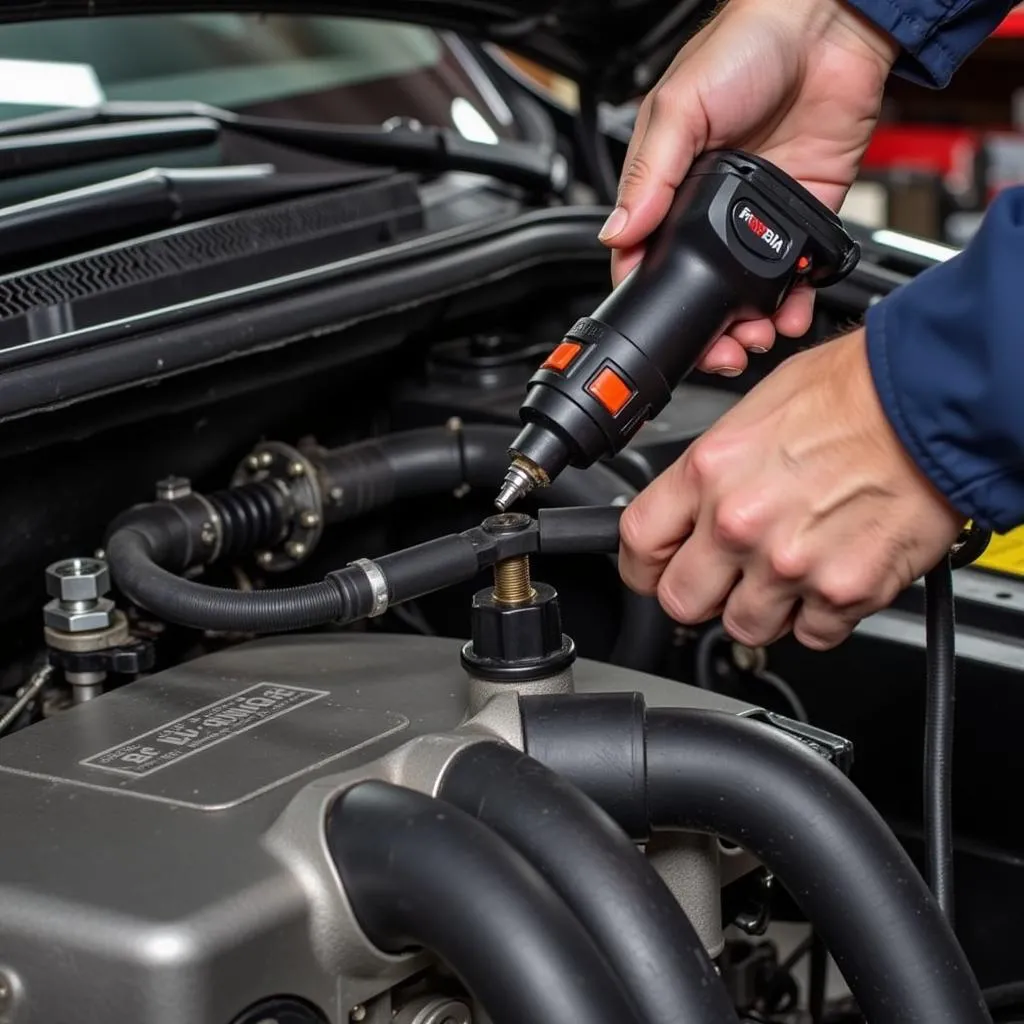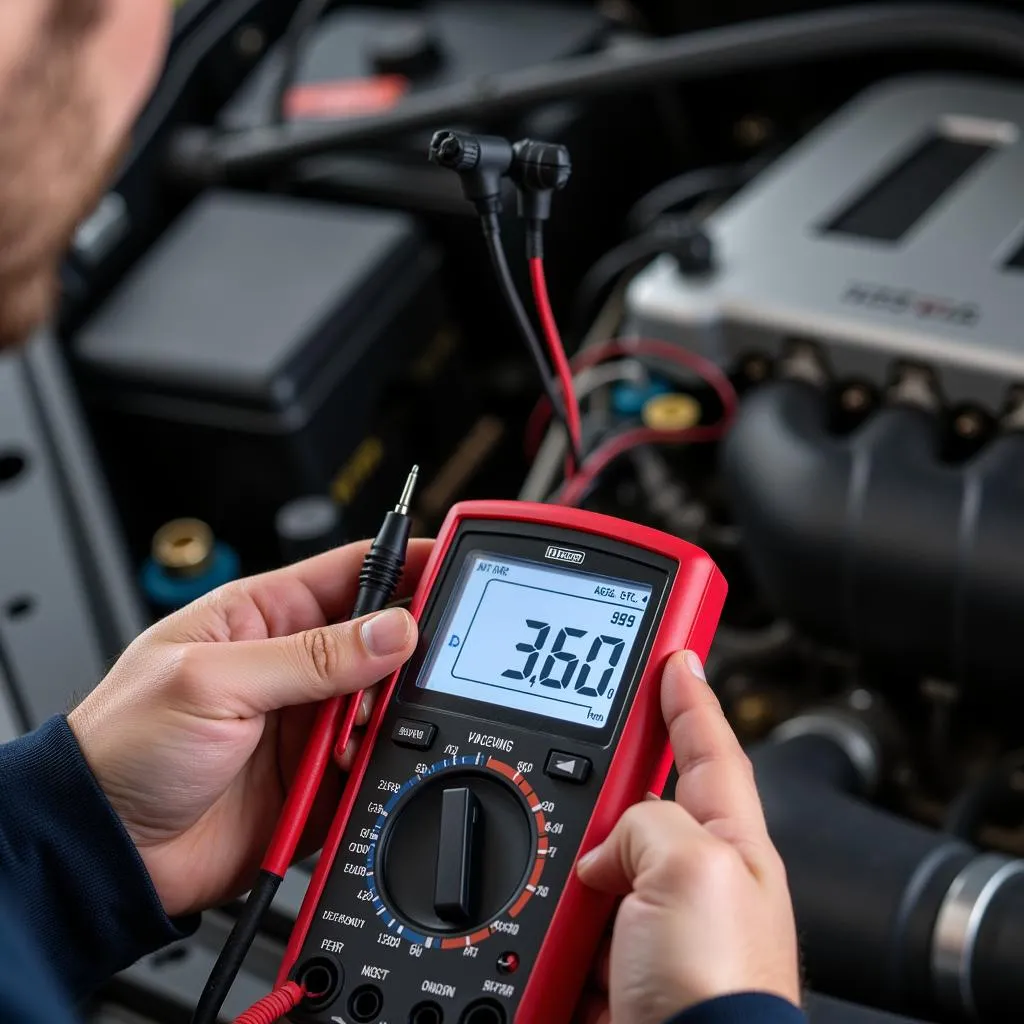Imagine connecting your scan tool, expecting to analyze fuel trim data, only to find…nothing. It’s like expecting a symphony but hearing only silence. A lack of fuel trim readings can be incredibly frustrating, especially when chasing down a tricky engine performance issue. But don’t worry, this guide is here to help you understand why this happens and how to bring those readings back to life.
Understanding the Importance of Fuel Trim
Before we dive into the causes of missing fuel trim readings, it’s crucial to understand why they’re so important. In simple terms, fuel trim is your engine’s way of fine-tuning the air-fuel ratio for optimal performance and efficiency.
- Short-term fuel trim makes rapid adjustments based on immediate sensor feedback, while long-term fuel trim focuses on gradual adjustments over time.
These readings, displayed as percentages on your scan tool, provide valuable insights into how your engine is running. Positive values indicate the engine is adding fuel, while negative values mean it’s taking fuel away.
 Scan tool displaying no fuel trim reading
Scan tool displaying no fuel trim reading
Common Causes for No Fuel Trim Reading
Now, let’s explore the potential culprits behind those absent fuel trim readings:
1. Faulty Oxygen Sensor(s)
Your oxygen sensors (O2 sensors) are the primary informants for fuel trim adjustments. They analyze the exhaust gases to determine if the air-fuel mixture is rich or lean. If an O2 sensor fails or sends inaccurate signals, the engine control module (ECM) might not receive the data needed to calculate fuel trim.
2. Malfunctioning Mass Air Flow (MAF) Sensor
The MAF sensor is another key player in fuel trim calculations. It measures the amount of air entering the engine. A faulty MAF sensor can disrupt the entire air-fuel ratio equation, leading to inaccurate or missing fuel trim readings.
3. Vacuum Leaks
Unmetered air sneaking into the engine through vacuum leaks wreaks havoc on fuel trim. The ECM expects a specific air intake based on sensor data. Leaks disrupt this balance, causing the engine to run lean and potentially leading to erratic or absent fuel trim readings.
 Mechanic inspecting a car engine for vacuum leaks
Mechanic inspecting a car engine for vacuum leaks
4. Fuel Delivery Problems
Issues with fuel pressure, clogged fuel filters, or malfunctioning fuel injectors directly impact the amount of fuel reaching the engine. These problems can lead to inconsistent fuel delivery, making it difficult for the ECM to accurately calculate and adjust fuel trim.
5. Exhaust Leaks
Similar to vacuum leaks, exhaust leaks before the O2 sensors can also disrupt fuel trim readings. These leaks alter the exhaust gas composition measured by the O2 sensors, leading to inaccurate data and potentially affecting fuel trim calculations.
6. ECM Issues
While less common, a problem with the ECM itself can also cause missing fuel trim readings. A faulty ECM might not be able to process sensor data correctly or command fuel trim adjustments, resulting in inaccurate or absent readings on your scan tool.
7. Scan Tool Compatibility
In some cases, the issue might not be with your car, but with your scan tool. Not all scan tools are created equal, and some may not be compatible with specific car models or engine control units. Using an incompatible scan tool can lead to incomplete data, including missing fuel trim readings.
Troubleshooting Missing Fuel Trim Readings
Now that you know the potential causes, let’s discuss how to troubleshoot the issue:
-
Check for Diagnostic Trouble Codes (DTCs): Start by scanning for DTCs using your scan tool. Codes related to oxygen sensors, MAF sensors, fuel systems, or the ECM can point you in the right direction. For a deeper understanding of DTCs, check out our article on PID definition scan tool.
-
Inspect for Vacuum and Exhaust Leaks: Carefully examine all vacuum hoses, intake manifold gaskets, and exhaust system components for signs of leaks. A hissing sound or a visual inspection can often help pinpoint these leaks.
-
Test Sensors: Use a multimeter or your scan tool to test the operation of your oxygen sensors, MAF sensor, and other relevant sensors. Compare the readings to manufacturer specifications to identify any deviations.
 Mechanic testing car sensors with a multimeter
Mechanic testing car sensors with a multimeter
-
Inspect Fuel System: Check fuel pressure with a gauge, inspect the fuel filter for clogs, and ensure fuel injectors are functioning correctly.
-
Consult a Professional: If the problem persists, it’s always wise to consult a qualified mechanic with advanced diagnostic tools and experience.
Frequently Asked Questions
Q: Can I drive my car with no fuel trim readings?
A: While you might be able to drive for a short distance, it’s not recommended. Driving without proper fuel trim adjustments can lead to reduced fuel economy, increased emissions, and potential engine damage in the long run.
Q: Do I need a special scan tool to read fuel trim data?
A: Most OBD-II scan tools can read fuel trim data. However, some basic code readers might not offer this functionality. Consider investing in a more advanced scan tool like the Autoenginutiy scan tool for comprehensive diagnostics.
Q: Can extreme temperatures affect fuel trim readings?
A: Yes, extreme temperatures can influence sensor readings and fuel trim adjustments. However, significant deviations from normal readings might still indicate an underlying problem.
Conclusion
Encountering no fuel trim reading on your scan tool can be perplexing, but understanding the common causes and troubleshooting steps empowers you to address the issue effectively. Remember, accurate fuel trim readings are vital for optimal engine performance, fuel efficiency, and emissions control. So, don’t ignore those missing readings – investigate and restore your engine’s harmonious balance.


